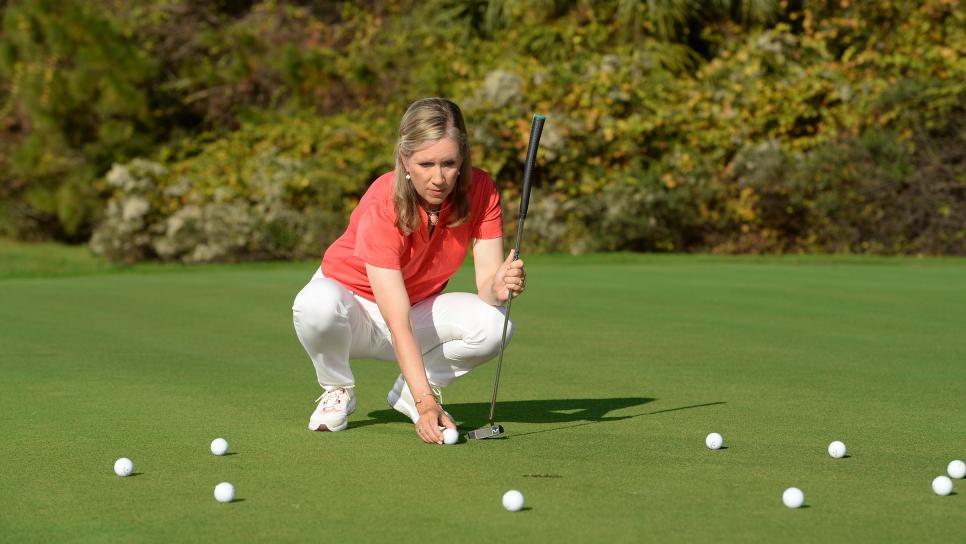Putting
How to cut down on your three-putts
Learn to be great from three and 30 feet to excel on the greens.

Photographs by J.D. Cuban
J.D. Cuban
How often do you get really upset for two-putting a hole? Probably not often, but cough up three shots on the green and you’re liable to lose your mind. A three-putt stays with you, and too many of them will be a real round-wrecker. Consider: The average PGA Tour player three-putts just once every 36 holes. That might be asking a lot of an amateur, but think how many strokes you’d save if you three-putted only once or twice every 18 holes.
The secret to three-putting less is to become exceptionally good at two distances—three and 30 feet. Why these two? Because you have to know how to lag it close and then convert the real shorties. Let me help you with that. —With Dave Allen
THREE-FOOT PUTTS
READ, AIM AND COMMIT
Many amateurs struggle from short range because they don’t practice these putts—ever! To make matters worse, they don’t go through the process of reading these putts and aiming properly on the course. As a result, the brain doesn’t know what to do. Confusion and doubt start to creep in, and once that happens, it’s very hard to put a good stroke on the ball.
As a drill, take 10 balls and space them evenly around the hole in a three-foot circle. Start at the first ball, read the break, aim the logo or line on the ball at your starting line (above), commit to the read, and make a stroke. Once you hole all 10 putts, spread the balls in a four-foot circle around the hole and repeat. The goal, besides making as many putts as you can, is to get in the habit of reading and aiming on every attempt, which is going to give your brain the information it needs so that you can make a decisive stroke.
Now you might think this exercise is really boring—and it can be—but if you just do this as little as 15 minutes per week, you’ll become much more comfortable over these knee-knockers.

J.D. Cuban
30-FOOT PUTTS
CREATE BETTER SYMMETRY IN YOUR STROKE
Thirty feet is where most amateurs typically start three-putting. Their big mistake is not so much with the read, but with speed control. They take the putter back short and slow, then accelerate quickly through the ball with a lengthy followthrough. As a result, the ball comes off with too much speed. I tell my students to be like a minivan coming through impact—not a Ferrari—and to use the length of their backswing to dictate the speed and distance the ball travels. The putter should accelerate naturally into the ball because of its weight and gravity, like a wrecking ball. You don’t need to add any speed to it.
Studies on tempo show that the best putting strokes have a 2-to-1 ratio—or two beats going back, one beat going forward into impact. The stroke length also is symmetrical, which helps prevent too much acceleration. For a drill, place a ball 30 feet from a hole and stick two tees in the ground equidistant from the ball. Swing the putterhead to the back tee and then to the forward tee (above). As you do this, choose an easy-to-remember name that has a ratio of two syllables to one, such as “In-bee Park” or “Tiger Woods,” and mouth the words “In-bee” or “Tiger” on the backswing and “Park” or “Woods” into the ball. Get the rhythm and length of your stroke down pat, and soon your long putts will routinely cozy up to the hole, and your three-putts will be a thing of the past.
CHERYL ANDERSON, one of Golf Digest’s 50 Best Teachers in America, is the director of instruction at the Mike Bender Golf Academy in Lake Mary, Fla.


